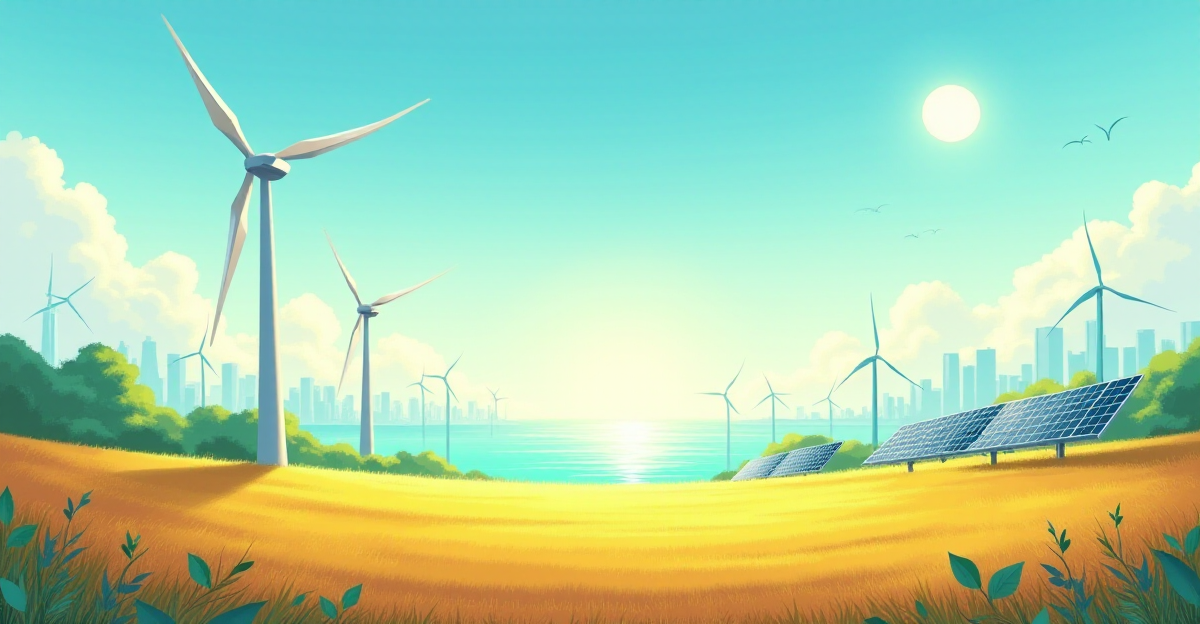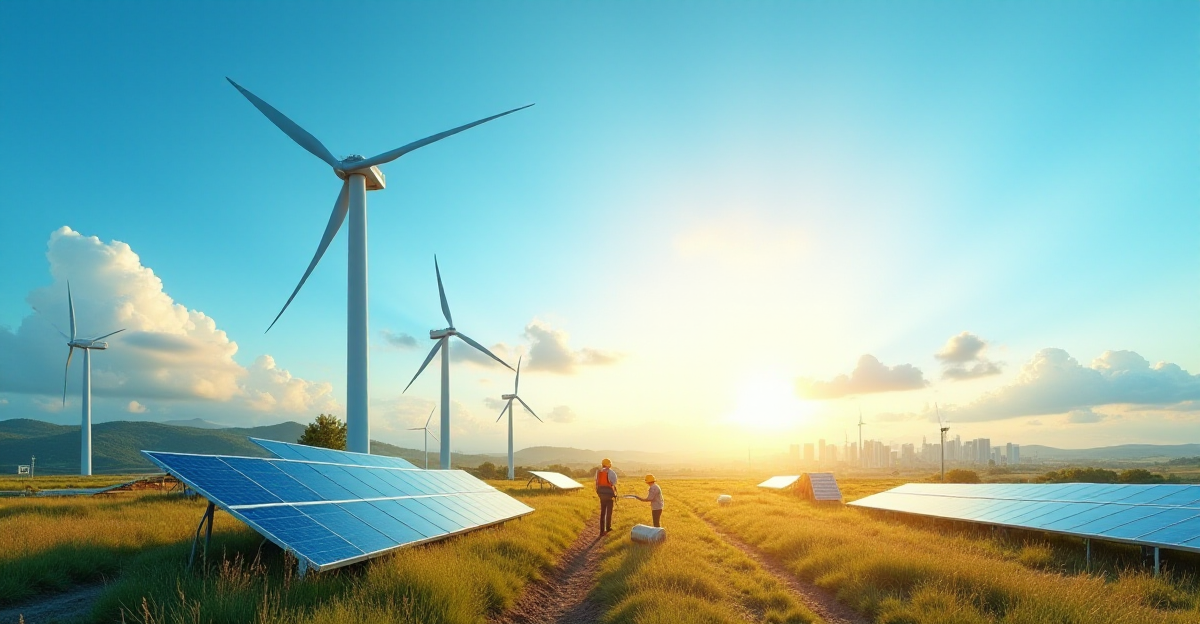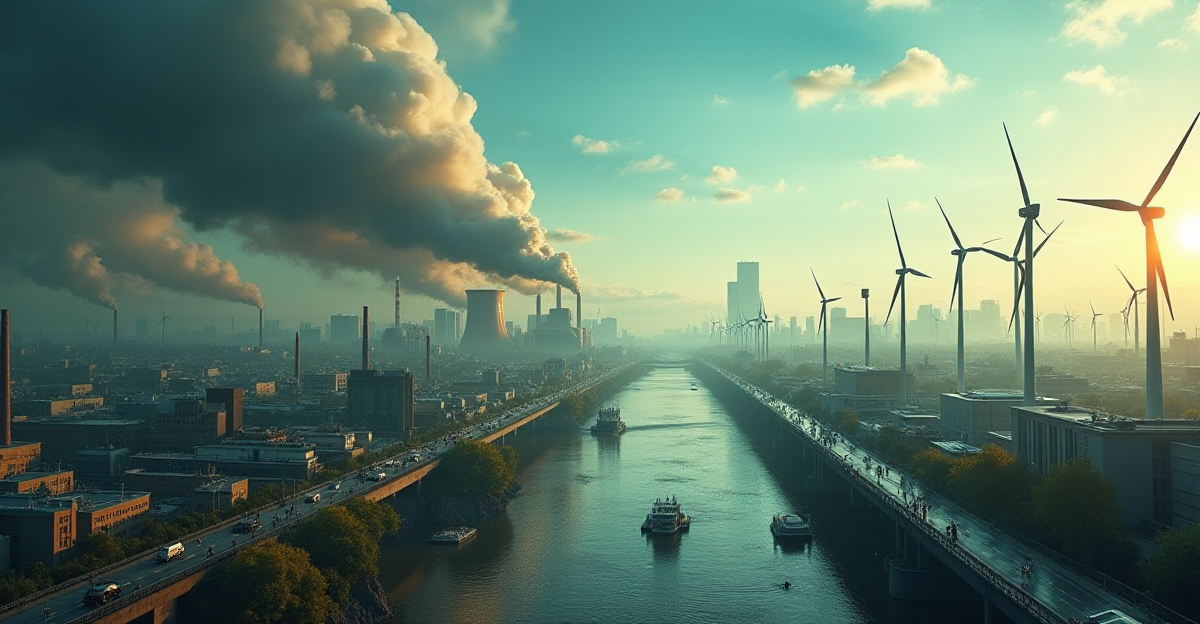Examining the innovative substitutes for fossil fuels—from solar and wind to less traditional options like tidal energy and biofuels. Talk about their environmental effect, technological developments, and feasibility.
Table of Contents
- Renewable Energy Sources: Powering a Sustainable Future
- Emerging Energy Technologies
- Economic and Environmental Impact of Renewable Energy Alternatives
- The Transition from Fossil Fuels to a Sustainable Future
- Extra’s:
Renewable Energy Sources: Powering a Sustainable Future

Unquestionably, fossil fuels have changed our globe; from increasing sea levels to severe storms. We must start down a better, more sustainable road, and renewable energy is a strong answer. This is about building a better future run by renewable energy sources, not only about rescuing the earth.
There is a wide spectrum of technologies included in renewable energy, each with particular benefits. Let’s investigate the several forms of renewable energy and grasp its great value in the energy transition.
The Power of the Sun and Wind
Solar and wind energy are regarded as the traditional renewable energy sources and are already having a major influence. You have most certainly heard of them. While wind turbines use wind’s kinetic energy to create power, solar panels straight transform sunlight into electricity. These existing technologies have shown their efficiency in mass generating sustainable energy.
For instance, Copenhagen, Denmark, has led the way in shifting toward a renewable energy future. They have extensively spent in wind turbines, and the city’s dedication to renewable energy has really helped to lower their carbon footprint. Imagine a time when cities like Copenhagen are the norm, clean energy running houses and businesses.
Exploring New Frontiers in Renewable Energy
Apart from the known solar and wind technologies, other unusual renewable energy sources with great promise exist. Using the natural ebb and flow of tides, tidal energy produces electricity upon which one can always rely.
In the transportation industry, biofuels—derived from organic materials such algae and plants—offer a sustainable substitute for conventional fossil fuels. I very clearly recall reading about a business working on a biofuel derived from algae; the goal was to produce a sustainable and renewable fuel. Although biofuel has great potential to lower greenhouse gas emissions, its manufacture should be ecologically conscientious. We must figure out how to maximize the advantages of biofuel generation while lowering its negative environmental effects.
The world is fast adopting renewable energy for a purpose: it provides a dependable and clean substitute for fossil fuels, therefore enabling us to slow down global warming and lessen our dependence on limited resources. But the energy transition is about our attitude and adopting a sustainable future as much as it is about technology. What difficulties do you see in moving to a future powered by renewable energies?
Emerging Energy Technologies

Moving away from fossil fuels and toward a future driven by renewable energy is more crucial than ever in our time. A great answer is renewable energy since it covers a broad spectrum of technologies using the boundless capacity of nature. Consider less known sources like tidal energy and biofuels, even as solar and wind energy are more familiar. These emerging energy technologies could help to build our earth a sustainable future.
Have you ever given any thought to how we may move away from fossil fuels and build a better energy future? The answer is to embrace green technology, creative means of harnessing natural resources. Imagine a time when the sun’s rays, the force of the wind, or the regular tide rhythm could run your house. Renewable energy can enable realization of the vision.
The Power of Green Technology
Green technology uses nature’s power. It’s about creatively using the sun, the wind, and other natural resources to create electricity, therefore producing a more sustainable energy future.
Beyond Solar and Wind: New Frontiers in Renewable Energy
Although Solar and wind energy are previously tested technologies, the hunt for fresh sustainable power sources never stops. Tidal energy, which shows great potential using the regular ebb and flow of tides to create electricity, Particularly in coastal regions, tidal energy presents a consistent and clean means of producing electricity. One striking illustration of how this technology is actually applied is the tidal energy project in the Bay of Fundy, Canada.
Another encouraging fossil fuels alternative for the transportation industry are biofuels. Organic stuff like plants and algae generates these fuels. One might greatly lower greenhouse gas emissions with biofuels. We must thus make sure that their manufacturing is ecologically friendly, so reducing the effect of biofuel production on land use, water supplies, and biodiversity. This involves concentrating on environmentally friendly methods and investigating less land-intensive, creative ideas including algae-based biofuels. Constant innovation is needed for the energy transition to a more sustainable future; biofuels are therefore rather important in this change.
Although biofuels could be very helpful in lowering our dependency on fossil fuels, it’s crucial to take some thought on the possible drawbacks. If biofuels are not generated sustainably, some forms may have harmful effects on land usage and biodiversity. This is why it’s imperative to concentrate on creating biofuels with low environmental effect and less land-intensive character. Using biofuels derived from algae presents one exciting path. Unlike conventional biofuel crops, algae can be grown in places unfit for agriculture and demand less acreage to flourish.
Energy production is about to enter a fresh chapter. Choosing green technology and funding renewable energy as we move away from fossil fuels would not only help to save our earth but also help to create a better future for all. Making wise choices about your energy consumption, helping companies and enterprises dedicated to renewable energy solutions, and pushing laws supporting green technology will help you participate in this shift. Working together, the energy of the sun, the wind, and the tides will power a globe leaving a better future for next generations.
Economic and Environmental Impact of Renewable Energy Alternatives

Imagine a world free from the environmental weight of conventional energy sources, one driven by the sun and wind. Renewable energy promises to deliver not only environmental but also financial changes.
We find possibilities as well as difficulties as we move toward a time when clean technology will dominate. Though careful planning and effort are needed on this road towards a sustainable future, the benefits for our earth and our economy are great.
Economic Impact: Balancing Growth and Investment
The move to renewable energy offers a major economic possibility. Large-scale solar and wind power projects build employment in manufacture, installation, and maintenance. Consider the busy bustle around the building of a large wind farm, with professionals guaranteeing flawless operation and laborers building tall turbines. Local economies are stimulated by this economic activity, therefore generating employment and revitalizing businesses.
Turning to sustainable energy does, however, present certain difficulties. Large-scale renewable energy projects demand significant upfront costs, which can be a challenge for corporations and governments alike. Like building a new highway, a major outlay but a long-term fix.
Environmental Impact: A Sustainable Future
Changing from fossil fuels to renewable energy has an overwhelmingly good effect on the surroundings. Two of the most urgent issues we deal with now—climate change and environmental damage—may be resolved with one adjustment.
Let’s look at some of the benefits:
- Reducing Carbon Emissions: Solar and wind power generate electricity without emitting greenhouse gases, which are the primary drivers of climate change. By reducing our reliance on fossil fuels, we can mitigate the harmful effects of climate change, including rising sea levels and more extreme weather events.
- Cleaner Air and Water: Utilizing renewable energy leads to cleaner air and water quality, reducing pollution and improving public health. We can enjoy healthier ecosystems and breathe easier, reducing the incidence of respiratory illnesses.
- Biodiversity Protection: Renewable energy technologies, like solar and wind power, can be implemented with minimal impact on biodiversity and ecosystems. Imagine a wind farm carefully sited to avoid interfering with bird migration routes.
We must nevertheless also take any environmental issues into account. For example, a kind of renewable energy derived from plants, biofuels, need land for production. This could raise questions about land use and competition with food production, therefore influencing food security. Striking a balance that advances food security as well as energy generation is absolutely vital.
The Challenges of Biofuels
In the transportation industry, biofuels have become more interesting substitute for conventional fuels. Still up for dispute, though, is how they affect food security and land usage.
Imagine a large area of land being used for biofuels manufacture instead of food, therefore increasing food prices. This situation emphasizes the importance of sustainable practices and thorough planning to guarantee that the generation of biofuels does not compromise food security or the environment.
For instance, growing food costs and land use changes connected to the expansion of corn-based ethanol production in the United States raise questions over the long-term viability of this strategy. Likewise, palm oil—often used in biodiesel manufacture—has drawn criticism for aggravating deforestation and biodiversity loss.
Investing in a Clean Technology Future
Changing to renewable energy offers a special chance to create a better, healthier planet. Research, development, and policy changes must be kept under constant investment if we are to enable a sustainable future driven by clean technologies.
You can help this metamorphosis take shape. Investigate local green projects, support local renewable energy sources, or get in touch with your legislators to promote environmentally friendly laws. Combined, we can change things.
The Transition from Fossil Fuels to a Sustainable Future

Imagine a society in which our energy comes from plentiful, clean sources free of environmental damage. As the results of our dependence on fossil fuels become more clear, this idea of a sustainable future is become more pressing. We have arrived at a turning moment in history; moving to renewable energy is now a need rather than a decision.
Moving away from fossil fuels calls for major technological, legislative, and psychological shifts. It goes beyond just substituting new energy sources for old ones. It’s about embracing a cleaner, more sustainable future by changing the way we create and use energy.
The Imperative for Change: Why We Need a Sustainable Future
Burning fossil fuels generates dangerous greenhouse gasses that hasten global warming. Rising sea levels, more frequent and strong storms, and disturbances to ecosystems are among the dire results. These effects endanger the well-being of next generations as well as the state of Earth.
Renewable energy presents a workable road towards a future more ecologically friendly. Imagine a society run on solar, wind, and other natural resources creating clean energy free of damage to our earth. This move to renewable energy might help to lower our dependence on fossil fuels, slow down global warming, and clean the air.
Embracing Clean Energy: Benefits and Challenges
The shift to a renewable energy future is sensible investment in our future, not only a need. Having many benefits, green technology presents a convincing answer to our energy problems.
Let’s explore some of the benefits:
- Reducing Carbon Emissions: Renewable energy sources like solar and wind power produce electricity without emitting greenhouse gases, a crucial step in combating climate change. Imagine a future where our energy sources aren’t contributing to the pollution that’s harming our planet.
- Cleaner Air and Water: By transitioning to renewable energy, we can improve air and water quality, leading to healthier ecosystems and better public health. Think of a world where we breathe clean air and drink clean water, free from the harmful pollutants associated with fossil fuels.
- Economic Growth: The development and deployment of green technology can stimulate economic growth, creating jobs in manufacturing, installation, and maintenance of renewable energy technologies. This transition can revitalize our economies, fostering innovation and prosperity. For example, the solar industry has created millions of jobs worldwide, and the wind energy sector is also experiencing rapid growth.
- Energy Independence: By embracing renewable energy, we can reduce our dependence on foreign oil and gas, enhancing our energy security. This means greater control over our energy resources and a more resilient energy infrastructure. For example, many countries are now investing heavily in solar and wind energy, reducing their reliance on imported fossil fuels.
The switch to renewable energy, nonetheless, also offers certain difficulties:
- Upfront Investment: Building large-scale renewable energy projects requires significant upfront investment. Governments and businesses need to make substantial commitments to support the development and deployment of these technologies. However, the long-term benefits of renewable energy outweigh the initial costs. For example, the initial cost of installing solar panels may be high, but the long-term savings on electricity bills make it a worthwhile investment.
- Intermittency: Some renewable energy sources, such as solar and wind power, are intermittent – their availability depends on weather conditions. This requires developing energy storage solutions and integrating renewable energy sources into existing power grids. Smart grid technologies and energy storage solutions like batteries and pumped hydro can help overcome these challenges.
- Land Use: Some renewable energy technologies, such as biofuels, require land for cultivation. This can raise concerns about land use and competition with food production. It’s essential to adopt sustainable practices, such as using marginal land and ensuring biodiversity is preserved.
The Future We Can Build Together:
Notwithstanding these obstacles, the shift to a renewable energy future presents major chances for development and creativity. This is a time for cooperation between governments, companies, people to build a more sustainable future for next generations.
What if we could run our houses and companies solar-powered? Imagine if we could design an eco-friendly future that advantages everyone. In this future, we lessen our effect on the earth and produce a better, more rich environment for all. Let’s construct that future together.
Extra’s:
For a deeper dive into the mysteries of the universe, consider exploring the intriguing world of “Unraveling the Mysteries of Dark Matter“. This post delves into the enigmatic substance that constitutes a significant portion of the universe, offering insights into its nature and potential impact on our understanding of cosmology. Alternatively, if you’re curious about the celestial forces shaping our planet, “Heliophysics: Understanding the Sun and Its Effects on Space” provides a comprehensive overview of solar activity and its influence on Earth’s environment.
To gain further insight into the environmental implications of renewable energy, consider exploring the research article titled “Environmental impact of renewable energy source based electrical power plants: Solar, wind, hydroelectric, biomass, geothermal, tidal, ocean, and osmotic – ScienceDirect.” This study offers a detailed analysis of the environmental footprint associated with different renewable energy sources. For a broader perspective on the transition to a fossil fuel-free future, the report “Beyond Fossil Fuels – Fully renewables-based power in Europe by 2035 : Beyond Fossil Fuels” outlines a compelling vision for a fully renewable energy system in Europe.












1 thought on “Beyond Fossil Fuels: Innovative Alternatives Shaping Our Future”